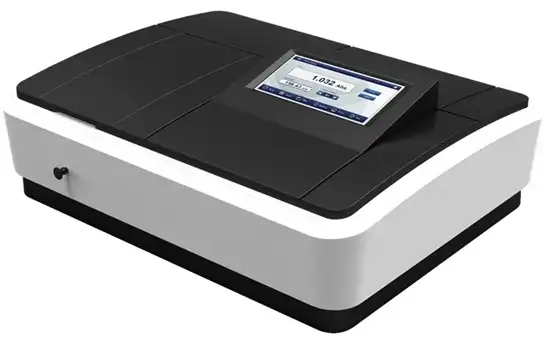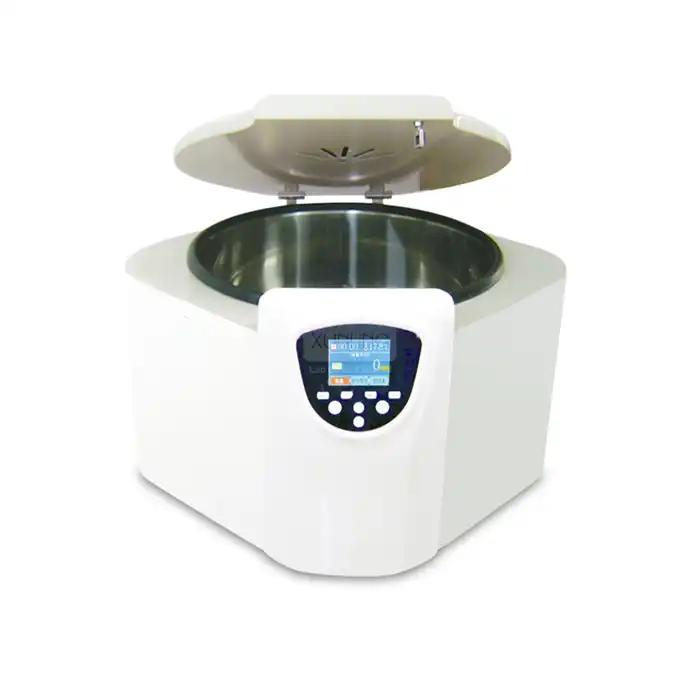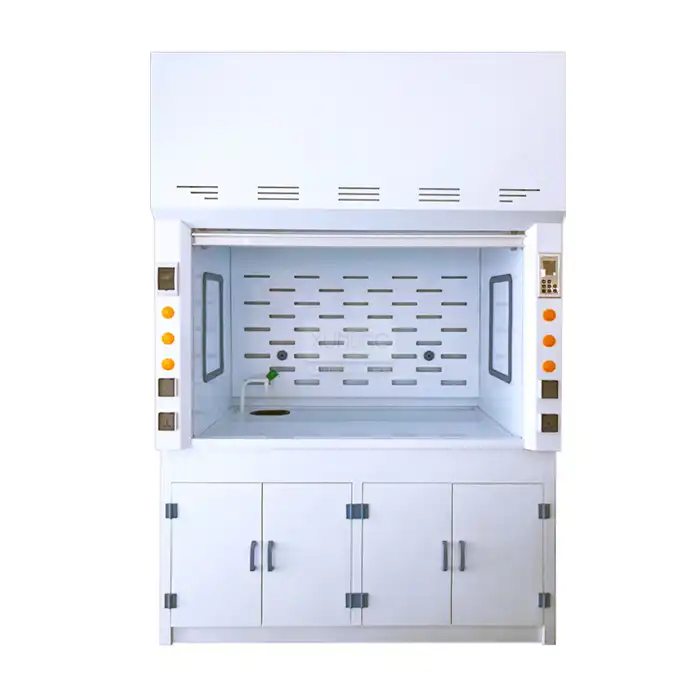
Choosing the Right Class II Type B2 Biosafety Cabinet for Your Application
2025-09-04 10:58:08
Selecting the appropriate biosafety equipment is crucial for maintaining laboratory safety standards and protecting both personnel and the environment from biohazardous materials. The Class II Type B2 Biosafety Cabinet represents the gold standard in laboratory containment technology, offering unparalleled protection for applications involving radioactive materials, chemotoxic agents, and infectious organisms. This comprehensive guide will help you understand the critical factors to consider when choosing the right Class II Type B2 Biosafety Cabinet for your specific application needs, ensuring optimal performance, safety compliance, and operational efficiency in your laboratory environment.
Understanding the Technical Specifications of Class II Type B2 Biosafety Cabinets
Airflow Dynamics and Performance Parameters
The Class II Type B2 Biosafety Cabinet operates on sophisticated airflow principles that ensure maximum containment and protection. These cabinets feature a vertical laminar airflow design with precise descent wind speeds of 0.33m/s and suction air speeds of 0.53m/s. This carefully calibrated airflow system creates a protective barrier that prevents contaminated air from escaping the workspace while maintaining optimal working conditions. The dual exhaust system distinguishes Type B2 cabinets from other classifications, featuring separate exhaust paths for contaminated air and hazardous materials. This design ensures that all air is completely exhausted outside the laboratory building, providing 100% exhaust capability that makes these cabinets ideal for work with volatile chemicals and radioactive materials. The microprocessor-based control system continuously monitors airflow parameters, providing real-time feedback through LCD displays and triggering audible and visual alarms when airflow disruption occurs or when the window position is compromised.
Filtration Systems and Cleanliness Standards
The filtration system in a Class II Type B2 Biosafety Cabinet represents cutting-edge technology in contamination control. These cabinets utilize dual HEPA filtration systems with efficiency ratings of ≥99.995% at 0.3μm for HEPA filters and ≥99.999% at 0.12μm for ULPA filters. This exceptional filtration capability ensures that both incoming and outgoing air meets the highest cleanliness standards, achieving ISO level 5 (Class 100) cleanliness grade with HEPA filtration and ISO level 4 (Class 10) with ULPA filtration. The specialized air supply filters and exhaust air filters are precisely engineered to handle the demanding requirements of biohazardous material containment. For instance, the BSC-1000II B2 model features air supply filters measuring 900×470×70mm and exhaust air filters of 650×450×90mm, while larger models like the BSC-1600II B2 incorporate correspondingly larger filtration systems. This comprehensive filtration approach ensures that the Class II Type B2 Biosafety Cabinet maintains sterile working conditions while effectively containing hazardous materials.
Structural Design and Safety Features
The robust construction of a Class II Type B2 Biosafety Cabinet incorporates multiple safety features designed to protect users and maintain containment integrity. The cabinet features a stainless steel work surface that resists chemical corrosion and facilitates easy decontamination, while the epoxy-coated steel exterior provides durability and chemical resistance. The anti-UV safety glass front window not only protects against ultraviolet radiation but also provides clear visibility of the workspace while maintaining containment. Vibration control is achieved through precision engineering that limits vibration half peak to ≤5μm, ensuring stable working conditions for sensitive procedures. The noise level is maintained at ≤65dB, creating a comfortable working environment that minimizes operator fatigue during extended use. Advanced safety features include emergency shutdown capabilities, differential pressure monitoring, and fail-safe alarm systems that immediately alert users to any compromise in containment. The adjustable height stand ensures optimal ergonomics for users of various sizes, promoting proper posture and reducing operator fatigue during prolonged operations.
Application-Specific Requirements and Selection Criteria
Laboratory Type and Biosafety Level Considerations
When selecting a Class II Type B2 Biosafety Cabinet, understanding your laboratory's specific requirements and biosafety level classifications is paramount. These cabinets are specifically engineered for work with biological agents categorized under Biosafety Levels 1 through 3, making them suitable for a wide range of research applications. In microbiology laboratories, the Class II Type B2 Biosafety Cabinet provides essential containment for pathogenic microorganisms while preventing cross-contamination in sensitive cell culture work. The cabinet's ability to handle low to moderate risk agents makes it indispensable for clinical laboratories processing patient samples that may contain infectious agents. Research facilities working with molecular biology applications, including PCR processes, benefit from the cabinet's sterile environment that protects both samples and operators from contamination. The specialized design accommodates the unique requirements of each laboratory type, with features such as dedicated electrical outlets for equipment integration and optional UV lights for surface decontamination between procedures.
Chemical and Radiological Material Handling
The Class II Type B2 Biosafety Cabinet excels in applications involving hazardous chemicals and radionuclides due to its complete exhaust design and superior containment capabilities. Unlike other cabinet types, the B2 classification ensures that all air is exhausted outside the building, preventing the recirculation of potentially contaminated air within the laboratory. This feature is critical when working with volatile organic compounds, chemotoxic agents, or radioactive materials that require complete removal from the laboratory environment. The dual exhaust system provides separate pathways for different types of contamination, ensuring that hazardous materials are properly contained and filtered before being exhausted. Pharmaceutical laboratories benefit from this capability when preparing sterile drug formulations or conducting quality control testing involving toxic compounds. The robust filtration system effectively captures particulates and aerosols generated during chemical manipulations, while the stainless steel construction resists corrosion from aggressive chemicals. This makes the Class II Type B2 Biosafety Cabinet an essential component in laboratories conducting research with carcinogenic compounds, mutagenic agents, or other hazardous substances that require specialized containment.
Workspace Dimensions and Operational Flexibility
Selecting the appropriate workspace dimensions for your Class II Type B2 Biosafety Cabinet requires careful consideration of your laboratory's operational requirements and available space. The BSC-1000II B2 model offers a compact workspace of 1000×520×640mm, making it ideal for laboratories with limited space or those primarily conducting small-scale procedures. The overall device dimensions of 1165×760×2200mm allow for installation in standard laboratory settings while providing adequate workspace for most applications. For laboratories requiring larger working areas, the BSC-1300II B2 provides a workspace of 1300×520×640mm with overall dimensions of 1465×760×2200mm, accommodating larger equipment and multiple simultaneous procedures. The BSC-1600II B2 offers the most spacious working environment with dimensions of 1600×520×640mm and overall device dimensions of 1765×760×2200mm, making it suitable for high-throughput operations or procedures requiring extensive equipment setups. Each model maintains consistent performance parameters regardless of size, ensuring that larger cabinets provide the same level of protection as smaller units. The uniform 2200mm height across all models ensures consistent ergonomics and allows for standardized laboratory design.
Performance Optimization and Quality Assurance
Certification Standards and Compliance Requirements
A high-quality Class II Type B2 Biosafety Cabinet must meet stringent international standards to ensure optimal performance and regulatory compliance. These cabinets are manufactured in accordance with NSF/ANSI 49 standards, which establish comprehensive requirements for biosafety cabinet design, construction, and performance. EN 12469 compliance ensures that the cabinet meets European safety standards for biotechnology applications, while ISO 14644.1 certification verifies that the cabinet achieves the required cleanliness levels for controlled environments. The biosafety personnel protection parameters demonstrate the cabinet's effectiveness in preventing operator exposure, with CFU (Colony Forming Units) of all impact samplers maintained at ≤10 and slit samplers at ≤5. Product protection capabilities are verified through testing that ensures CFU of all sampling dishes remain ≤5, while cross-contamination protection is demonstrated by maintaining CFU of all culture dishes at ≤2. These rigorous testing protocols ensure that each Class II Type B2 Biosafety Cabinet meets or exceeds industry standards for biological containment and operator protection.
Energy Efficiency and Environmental Considerations
Modern Class II Type B2 Biosafety Cabinet designs incorporate energy-efficient technologies that reduce operational costs while maintaining superior performance. The integration of ECM (Electronically Commutated Motor) blower motors provides variable speed control and significantly improved energy efficiency compared to traditional motor designs. LED lighting systems replace conventional fluorescent lighting, offering enhanced illumination at ≥900LX while consuming less energy and generating minimal heat. The microprocessor-based control system optimizes airflow patterns and motor speeds based on real-time conditions, reducing energy consumption during periods of lower activity. These efficiency improvements contribute to reduced operational costs and environmental impact while maintaining the stringent performance requirements necessary for safe laboratory operations. The durable construction and high-quality components ensure extended service life, reducing the frequency of equipment replacement and minimizing environmental waste. Advanced filter designs maximize filtration efficiency while minimizing pressure drop, reducing the energy required to maintain proper airflow patterns throughout the cabinet's operational life.
Maintenance and Long-term Performance
Ensuring optimal long-term performance of your Class II Type B2 Biosafety Cabinet requires understanding maintenance requirements and establishing proper service protocols. Regular maintenance includes filter replacement schedules based on usage patterns and contamination levels, with HEPA and ULPA filters typically requiring replacement every 12-24 months depending on application intensity. The stainless steel work surface and interior components require regular cleaning and decontamination using appropriate chemical agents that maintain surface integrity while ensuring complete sterilization. Calibration procedures must be performed regularly to verify airflow parameters, filter integrity, and alarm system functionality. Professional installation and commissioning ensure that the cabinet operates within specified parameters from the initial setup. Comprehensive warranty coverage and flexible service contracts provide ongoing support for maintenance activities, troubleshooting, and component replacement. The modular design of key components facilitates efficient maintenance procedures and minimizes downtime during service activities. Regular performance verification through particle count testing and airflow measurement ensures that the cabinet continues to meet safety standards throughout its operational life.
Conclusion
Selecting the right Class II Type B2 Biosafety Cabinet requires careful evaluation of technical specifications, application requirements, and long-term operational considerations. These advanced containment systems provide unparalleled protection for laboratory personnel and the environment while enabling safe handling of biohazardous materials, chemicals, and radioactive substances. By understanding airflow dynamics, filtration capabilities, workspace requirements, and compliance standards, laboratory managers can make informed decisions that ensure optimal safety and performance for their specific applications.
Ready to enhance your laboratory safety with a premium Class II Type B2 Biosafety Cabinet? As a leading China Class II Type B2 Biosafety Cabinet factory and trusted China Class II Type B2 Biosafety Cabinet supplier, Xi'an Xunling Electronic Technology Co., Ltd. offers comprehensive solutions tailored to your specific needs. Our position as a premier China Class II Type B2 Biosafety Cabinet manufacturer ensures access to cutting-edge technology and competitive Class II Type B2 Biosafety Cabinet price options. Whether you're looking for China Class II Type B2 Biosafety Cabinet wholesale solutions or individual units, we provide Class II Type B2 Biosafety Cabinet for sale with exceptional quality and reliability.
Our advantages include 5-day delivery, 5-year warranty, custom-made solutions, and comprehensive one-stop service. We offer cost-effective solutions without compromising quality, ensuring reliability and durability through high-grade materials and superior construction. Our user-friendly designs and comprehensive after-sales support, from installation to troubleshooting, guarantee your success. With flexible purchase options including online ordering and direct sales, we make the process seamless for you.
Contact Us today at xalabfurniture@163.com to discuss your Class II Type B2 Biosafety Cabinet requirements and discover how our expertise can enhance your laboratory safety and efficiency.
References
1. Richmond, J.Y., and McKinney, R.W. "Biosafety in Microbiological and Biomedical Laboratories, 5th Edition." Centers for Disease Control and Prevention, 2009.
2. Stuart, D.G., Eaglesome, M.D., and Dukelow, W.R. "Classification and Performance Standards for Biological Safety Cabinets." Applied Biosafety, vol. 8, no. 3, 2003, pp. 142-151.
3. Kruse, R.H., Puckett, W.H., and Richardson, J.H. "Biological Safety Cabinetry: A Review of Development and Design Principles." Journal of Environmental Health, vol. 54, no. 2, 1991, pp. 18-25.
4. Greenwood, M.H., and Hooper, W.L. "Laboratory Containment and Biological Safety Cabinet Performance Evaluation." Laboratory Medicine, vol. 29, no. 4, 1998, pp. 234-241.
YOU MAY LIKE












_1735552742845.webp)



